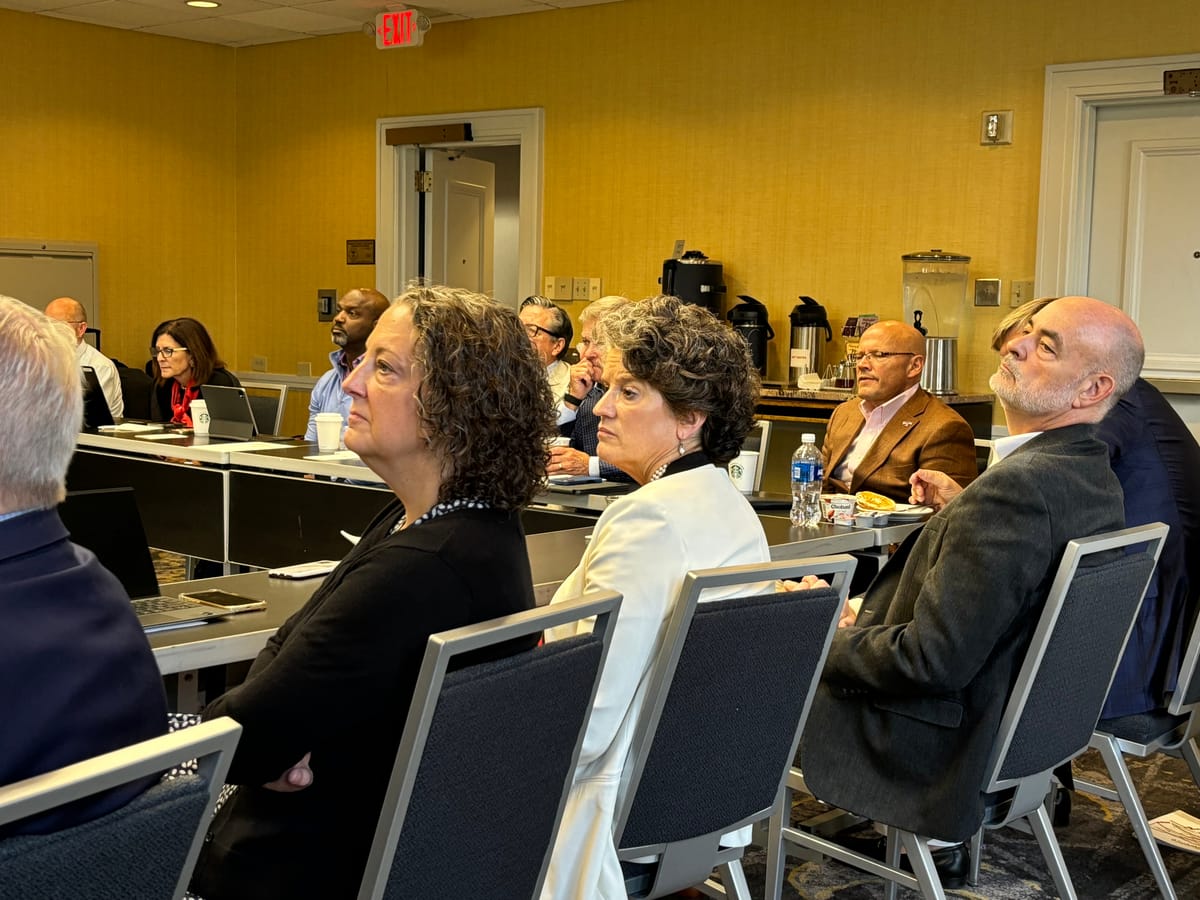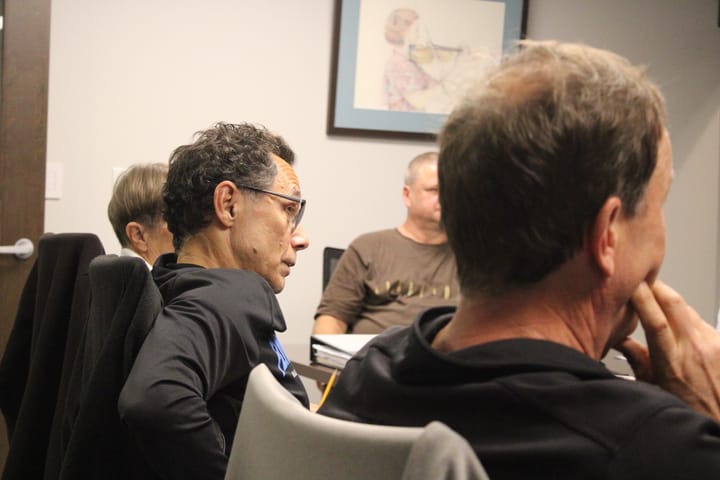Faculty workload, cuts to majors, new arena discussions at Miami Board of Trustees meetings
Changes in faculty workload and available majors, an update on the proposed arena and other approvals were discussed during Miami University Board of Trustees meetings at an annual retreat in Columbus last week.

Changes in faculty workload and available majors, an update on the proposed arena and other approvals were discussed during Miami University Board of Trustees meetings at an annual retreat in Columbus last week.
Faculty workload changes
Interim Provost Chris Makaroff said Miami administrators previously began examining faculty workloads with the goal of developing a “fair, equitable workload policy for all faculty to try to deal with the issues that were uncovered.”
“Some faculty weren’t really carrying their full load, and others were carrying more than their full load,” Makaroff said.
He additionally said Miami determined around 75% of faculty had a workload around the correct amount, while about 19-20% should be teaching more and about 5% should be teaching less.
“We predicted that we’d save about $2.7 million with making those who weren’t teaching as much teach more,” he said.
Although the university is only one semester into the changes, Makaroff said the university has made an attempt to change the composition of the faculty in certain areas. He said the number of tenured/tenure-track faculty is down from 517 last year to 497 this year. Visiting and part-time faculty have decreased, although the number of graduate assistants has remained the same.
Overall, he said the number of faculty has decreased from 1,100 to 1,034, “So the workload, the change in workload seems to be working.”
Low-enrolled classes, program updates
Since the fall of 2020, Makaroff said 76 degree programs, including majors, co-majors and certificates, have been eliminated, and the university continues to monitor programs that have fewer than 50 majors.
During the 2023-24 academic year, Makaroff said programs with under 35 majors were eliminated. The recently passed Senate Bill 1 has set the minimum number of majors a program in a public university should have to stay open at 20.
Of the 76 programs that have been eliminated, Makaroff said 58 were majors, including 37 undergraduate and 19 graduate majors, 14 were certificates and four were co-majors.
When asked, Makaroff estimated, in the same amount of time, about 15 to 20 programs were added, primarily in business, engineering and social work.
In none of the program elimination cases was an entire department eliminated, Makaroff said.
Following the meeting, Makaroff told the Oxford Free Press, although the number of faculty has “gone down slightly … what we’re doing is we’re repositioning professors to meet student demand.” Instead, professors are being transitioned to growing majors.
“There was changing student demand, and we weren’t able to offer the courses that were needed for the growing majors,” Makaroff said of Miami’s reasoning for the eliminations. “So we were told we needed to look at where the student demand was and reallocate resources towards where the students have demand.”
Makaroff told the board majors are being eliminated primarily in the humanities. He listed off examples of majors that were eliminated, including art history, American studies and esports management.
As the university continues to “optimize its teaching capacity,” Makaroff said, it’s continuing to reduce low-enrolled sections.
Between fall 2024 and fall 2025, Makaroff said there are now 132 fewer course sections overall. There are 201 fewer sections with an enrollment less than 15 and 69 more sections with an enrollment of greater than 15.
Makaroff said the university is also working to “streamline” courses that meet the goals of the Miami Plan, or required general education courses, as he has heard from students it is “too complicated” and there are “too many things to choose from.”
A committee has been formed, and Makaroff estimated a timeline for revisions on the Miami Plan. He said feedback would likely be gathered from students, faculty and leadership this month and in October, and the new plan, if approved, would begin in fall 2027.
Arena update
David Creamer, senior vice president for finance and business services and treasurer, asked the board if it would like to proceed with the planning and programming for a new basketball/volleyball arena in lieu of Millett Hall.
The board agreed to move forward, although Creamer told the Oxford Free Press there has not yet been a final decision on whether to proceed with construction. Creamer said that decision will come within the next calendar year.
“This simply allows us to continue to plan and design around what the facility would look like, how it would be situated on the site, the types of things we’ll need to do to be able to accommodate some of the things that are being displaced,” Creamer said.
For example, some Miami community members have shared their concerns about the idea of placing the new arena on Cook Field, a campus green space. But the university has decided to relocate the green space to the site of the current stadium, Millett Hall.
The university has been installing geothermal wells below the surface of the grounds near Millett Hall, which Creamer said has limited what can be built on the site. While the university would not be able to place another building, like a new arena, on the site, the intramural fields can be relocated there.
Approvals
The board voted to authorize President Gregory Crawford to execute a finalized agreement between Miami and the Cleveland Clinic, with which the university already partners to train students pursuing careers in healthcare.
The board also approved the naming of the clinical health sciences building on the Oxford campus to reflect the terms of the agreement. According to a subsequent release from Miami, the health sciences building will now be named the Cleveland Clinic Health Sciences and Wellness Facility.
Ande Durojaiye, vice president for strategy and partnerships, told the Oxford Free Press following the meeting, the partnership not only benefits students, but other collaborations which have grown from the partnership.
In January, Miami and the Cleveland Clinic announced their joint effort to establish the state’s first specialized degree program and research in quantum computing. In July, the state of Ohio awarded the university $7 million to create a quantum computing workforce and assist in establishing the Ohio Institute for Quantum Computing Research, Talent and Commercialization, now a partnership between Miami and the Cleveland Clinic.
“Looking across the entire university, we've now started to engage a number of our academic departments to support academic programming, but also internships for students,” Durojaiye said. “And so we see this partnership with the clinic continuing to be just a cropping of what started a year ago, an initial conversation about one area that's now expanding across the entire university and their entire operation up in Cleveland.”
The board also voted to approve two honorary degrees for Mike Brown, president of the Cincinnati Bengals, and former NBA player Ron Harper.
Finally, the board approved a resolution to change the lease for the Oxford Community Arts Center (OCAC), currently in the historic Oxford Female Institute. The change would add an addendum to their current lease, which ends in 2052, to suspend a portion of the termination clause for 10 years, which will better postion the OCAC to raise money for a capital campaign to renovate the buidling's second floor.




